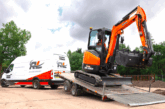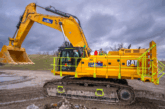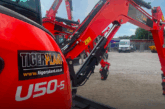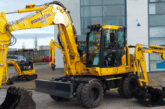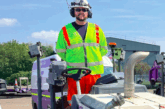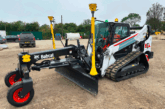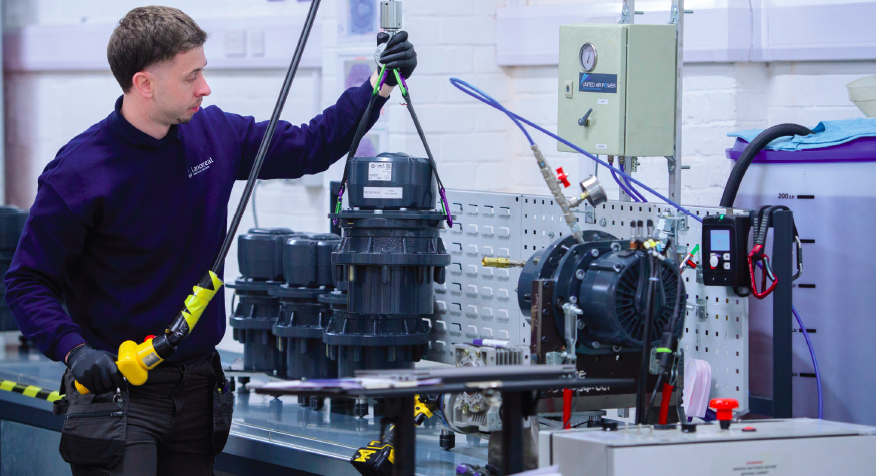
Rob Yorke, managing director at Lancereal, a powertrain and systems integrator for industrial and mobile equipment, explores the developments of electrification within material handling and how they might influence the construction machinery sector.
The material handling sector was one of the first markets to apply electric drives, and the adoption of electrification and move away from diesel and LPG has been on the rise ever since. If you consider forklifts; the noise they produce and the fumes from internal combustion engines (ICE) are not conducive to enclosed environments, such as warehouses. Therefore, forklift OEMs were one of the first to switch to battery powered machines because of the benefits – quieter operation than ICEs, more ergonomic and not relying on fossil fuels.
Initially, lead-acid batteries were used and for forklifts especially the large size and heavy weight were beneficial as they had space to accommodate it and it could be used as a counterbalance. However, they can be prohibitive in continuous operations as they require a long charge time.
As technologies develop we’re seeing more adoption of machine manufacturers using lithium-ion batteries. They provide longer run times, faster charging, and increased energy efficiency compared to lead-acid alternatives. However, operators not only want equipment that is quieter to operate with zero emissions they are looking for machines that are safer, autonomous and more efficient and as such are looking at all operations of the machine. Which is where working with a full systems integrator can be beneficial.
An example being, working with MOFFETT (a Hiab brand), who we started working with back in 2017. The company had begun converting diesel truck-mounted forklifts to electric in 2010 in response to customers requesting a quieter solution for early morning and late-night deliveries.
We got involved when the company was planning a new design for its next generation of e-trucks, which launched in 2020. The company wanted to keep the size of the drive similar to the engine-driven truck, so the challenge was to find a compact solution that would fit within the existing chassis.
We worked with the engineering team to find a suitable solution, which was a compact permanent magnet motor, a planetary gear box and a chassis mounting plate – designed to suit the existing chassis. In addition, integrated failsafe brakes (spring-applied) were included in the assembly. This provides automatic mechanical braking when the machine is parked or during emergency braking and complies with functional safety standards. The requirements resulted in the need for hydraulic operated brakes, though electromagnetic are also available when needed.
Solutions for construction environments
MOFFETT’s requirements aren’t unique in moving to electric. Having recently attended iVT, the industrial vehicle technology expo, there were a lot of conversations around electric actuators and the benefits of removing hydraulic hoses and fluid on the machines and the reduced maintenance this leads to.
However, there are still instances when having electric batteries driving hydraulics may be beneficial. This is typically when equipment will go between both indoor and outdoor use. Operations can benefit from the power and precision of hydraulics for tasks like stacking and placing loads with the efficiency and environmental benefits of electric systems.
A hybrid approach can also support the initial transition, as it’s our experience that electrification isn’t new to material handling but when it comes to construction specifically, it hasn’t moved as quickly as other sectors. A hybrid system commonly includes the use of an electric motor with a reduced ICE, allowing for lower fuel costs with heavy duty, rugged applications. Although this can often be seen as a quick route to market with a lower capital cost, legislation will eventually force the hand of many OEMs to adopt fully electric systems and they will soon see the benefits of increased efficiencies, quieter operation and lower lifetime maintenance and running costs.
There are also increasing safety advantages, such as the ability to incorporate software-based safety controls, from sequencing operator inputs, like ensuring seat belts are applied after the user is sat on the seat, to the use of watchdogs which continually check all devices are working correctly – like sensors, brakes or battery systems. And looking to automation, proximity sensors can be used to alert when people walk behind equipment.
Further safety features can be found in the software such as access control, impact detection, battery monitoring and emergency stop mechanisms. The experience for the operator is also improved, as the smoother operations means there are less vibrations. And the noise reduction is twofold from quieter operations to also being able to hear more clearly.
Having worked at the forefront of powertrain products and solutions for decades, we’re able to support with the whole vehicle architecture, which for some companies can really simplify not just the engineering transparency but also the purchasing and supply chain management.
And when making the move to replace traditional components with electrified alternatives this can provide reassurance that there’s a single source for managing the overall system, who really understands the benefits of components and how they can work together. For some customers we aren’t just supplying the components and controllers, but the software development and wiring too.
More information on Lancereal

